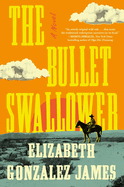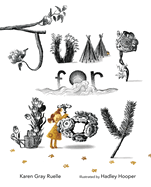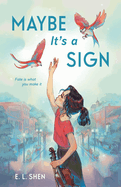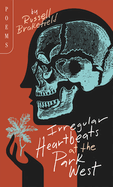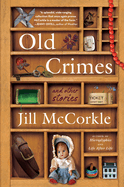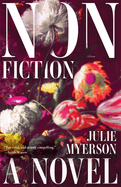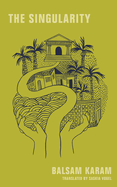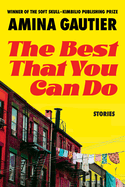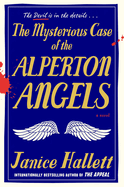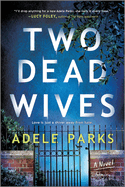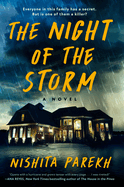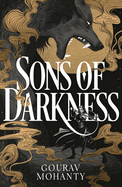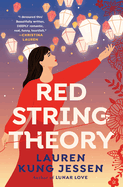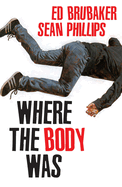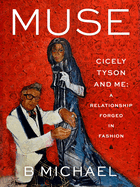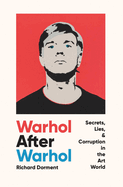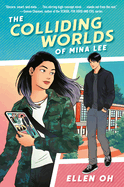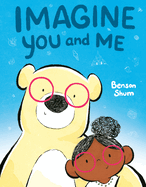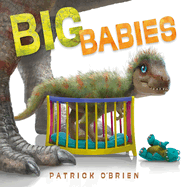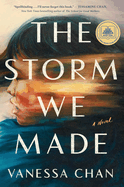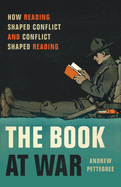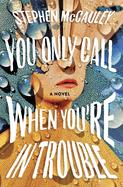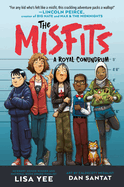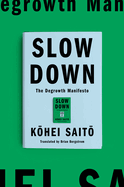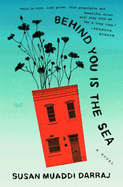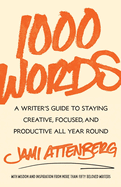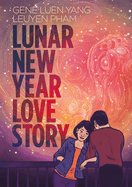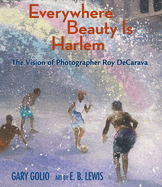Friday, January 26, 2024
Are you already tired of winter? Perhaps the poetry offerings this week are just the ticket to place you back in the moment: "both elegant and visceral," Theophanies, the debut collection from Muslim poet Sarah Ghazal Ali, "gives women's bodily and spiritual experiences primacy"; Russell Brakefield "draws from a deep well of emotional honesty and musical language" for the 52 poems in his Irregular Heartbeats at the Park West. And in Jump for Joy by Karen Gray Ruelle, illustrated by Hadley Hooper, the parallel yearnings of two strangers--a girl and a dog--carry readers through "this beautifully conceived and awe-strikingly illustrated picture book."
In The Writer's Life with Bangladeshi American writer Gemini Wahhaj, a theme emerges among the books to which she gravitates as a reader--characters who stand in their own power against reigning institutions.
The Bullet Swallower
by Elizabeth Gonzalez James
"Alferez Antonio Sonoro was born with gold in his eyes." Thus begins The Bullet Swallower by Elizabeth Gonzalez James (Mona at Sea), a novel that examines three generations of men in the Sonoro family, each grappling with their own relationship to violence, justice, trauma, and forgiveness. Alferez Antonio is one of the anchors to this story's pain, the source of a line of evil that demands a certain retribution. But the book leaves Alferez Antonio in the prologue, alternating between his son Antonio, a Mexican bandido known in 1895 as El Tragabalas (the Bullet Swallower), and his great grandson Jaime, star of wildly popular ranchera comedies in 1964 Mexico.
A failed robbery lands Antonio in the sights of the Texas Rangers, and fans of classic westerns will appreciate the atmosphere of every dusty backwater town and the tumult of each gunfight. But The Bullet Swallower is much more than just a western, introducing elements of magical realism that provide the perfect backdrop for its exploration of morality and the generational impact of human choices.
The novel is based on the family history of the author, including her great-grandfather, a bandido known as El Tragabalas. In an author's note, James comments, "Everything in this book is true except for the stuff I made up." Her blending of fact and fantasy, magic and morality, and the weight of family history is a success, making The Bullet Swallower both a page-turner with impeccable pacing and a complicated narrative full of unexpected elements and deeper questions. --Sara Beth West, freelance reviewer and librarian
Discover: The Bullet Swallower is more than just a fabulous western, with elements of magical realism providing a perfect backdrop for its exploration of morality and the generational impact of human choices.
Old Crimes
by Jill McCorkle
Jill McCorkle's Old Crimes dispels any skepticism about short stories feeling "complete." Her 12th book--and fifth story collection--offers 12 tales that include misdeeds ranging from child abuse to withholding truths, rich with wry dialogue and insights into lives shaped by moments that can resonate for years.
McCorkle (Hieroglyphics; Life After Life) presents characters whose circumstances evolve from the mundane to the intriguing: a strange little girl interrupts a college couple's afternoon lovemaking at a seedy motel in "Old Crimes"; a lonely older woman embraces her hearing loss, ignoring her dying husband as she recalls his abuses in "Low Tones"; and in "Filling Station," a successful businessman rents his grandparents' run-down former house, escaping his wife and home for peaceful solitude.
There's dark humor, as in the couple who buy an antique confessional and begin a game of sharing admissions, discovering that "there was no end to the well of secrets." Each of the 12 entries is distinctive, but McCorkle incorporates links, illustrating how time, circumstances, and point of view dramatically affect a story. In non-consecutive entries, readers discover that the businessman and the elderly woman share a significant connection. The brash, colorful waitress from "Commandments" reappears as the protagonist in "Baby in the Pan," revealing an ongoing contentious relationship with her mother. These unexpected and compelling repeat appearances will send readers back to reread, and to savor the skillful writing of a first-rate storyteller. --Cheryl McKeon, Book House of Stuyvesant Plaza, Albany, N.Y.
Discover: A short-story collection offers 12 distinctive and fully realized tales of characters whose ordinary days reveal moments of significance.
Walter Benjamin Stares at the Sea
by C.D. Rose
The title of the story "St. Augustine Checks His Twitter Feed" tells readers a good deal of what they need to know about the English writer C.D. Rose's collection Walter Benjamin Stares at the Sea. The story is a wry commentary on the allure of social media, as the cleric muses about writing what will become his Confessions and "oh, you know, the nature of suffering, evil, free will, time, the apocalypse, eternity, that kind of thing," while thinking about "changing his handle to @StAugustine_original," or wondering "why he hadn't gotten a blue checkmark."
Rose (Who's Who When Everyone Is Someone Else) gives a foretaste of much of what is to come in "Ognosia," the book's opener, which defies the short story convention of unity in point of view as it moves effortlessly among the perspectives of a group of characters in a hotel in an unnamed city. In "To Athens," Rose threads a lengthy sentence through a story whose paragraphs all begin with the phrase "I have a friend" to fashion an entrancing counterpoint. Meanwhile, "A Brief History of the Short Story" engagingly examines the form in its French, Russian, and American iterations through a smartly linked narrative.
Rose is heir to the tradition of short story writers like Jorge Luis Borges and Italo Calvino, and shares some of the sensibility of their contemporary counterparts like Steven Millhauser, Jim Shepard, and Aimee Bender. The 19 concise stories in this volume feature surrealist, metafictional and fabulist elements, and although not all succeed, there's much here that will appeal to readers who prefer short fiction of a less traditional variety. --Harvey Freedenberg, freelance reviewer
Discover: Adventuresome readers will enjoy this hard-to-pigeonhole collection of 19 short stories.
Nonfiction: A Novel
by Julie Myerson
Mother, daughter, wife, lover, writer, teacher: in Nonfiction: A Novel, Julie Myerson's protagonist processes and navigates these disparate roles, doing her best to exorcise her traumas of the past to champion a more holistic present and future. Myerson's haunting and lyrical prose is astoundingly adept at turning the pain of the protagonist's experiences into poetry of the human condition that glimmers in a ghostly way.
Myerson (The Stopped Heart) does not shy away from intense themes: addiction, homelessness, infidelity, emotional abuse, suicide. These could be too much for readers to chew through, but as the protagonist puts it when speaking to her writing student, "Plots are overrated, nothing like as necessary as everyone thinks they are." Myerson follows her own advice, crafting characters that are three-dimensional, damaged, hopeful, self-righteous, and so much more. This drives readers to continue wanting to experience the cast of characters as they unfold across the page. In describing the protagonist's mother, Myerson writes: "My mother always entered every room like it was a competition." With one sentence--and she masterfully does this with so many--she creates a human whom readers have known at one time or another and, thus, engenders empathy for them.
In a story of a mother losing her daughter to drugs, a wife witnessing her marriage fall apart, a writer finding her voice, a teacher trying to impart truth, and a daughter rooting through the corpse that is her relationship with her mother, Myerson allows readers into the morgue--and they can't help but want to stay. --Dominic Charles Howarth, book manager, Book + Bottle
Discover: In this work of unsettling beauty, Julie Myerson pulls back the veil on grief, and reveals that a ghost story does not have to be supernatural to still haunt.
The Singularity
by Balsam Karam, transl. by Saskia Vogel
Balsam Karam's The Singularity is an ambitious and striking work of literary fiction in which the narrative charts the losses and developments within two refugee families at different places in slightly different times. One family beset by tragedy has sought refuge in an unnamed coastal town where one of the daughters has since disappeared. Her mother, unable to cope with the grief, drowns herself, leaving her other children to fend for themselves.
The mother's death is witnessed by a visiting pregnant woman, herself the daughter of an immigrant family, whose life is impacted by the sight, as she remembers her own family's immigration to Sweden, an excruciating and alienating experience. Though she and her siblings have assimilated, doing so has come at a steep cost to their family's cohesion and their own mental health. The unnamed protagonist struggles to connect emotionally with a culture in which even the people friendliest to her are seemingly criminally indifferent to the reality of her life.
"None of your white friends have wanted to hear any of your memories from the war. It hits you one day as you're sitting with one of them, listening to him talk about how he used to pick blueberries with his grandmother as a child.... Yes but my friend Rozia was found in the rubble after a bombing, what do you think about that? you say and wait for him to respond."
Karam and Saskia Vogel, who translated this from the Swedish, present a work of exquisite and aching intimacy, one that challenges readers to keep looking and to engage with the pain. --Elizabeth DeNoma, executive editor, DeNoma Literary Services, Seattle, Wash.
Discover: The Singularity, exactingly beautiful and unbearably poignant, is a gut punch of a novel and an unmatched narrative of displacement, love, loneliness, and loss.
The Best that You Can Do
by Amina Gautier
One doesn't have to be a sailor to need navigation skills, and Amina Gautier (The Loss of All Lost Things) demonstrates why in her impressive collection, The Best that You Can Do. These 58 works of microfiction, many of them infused with 1970s pop culture references, focus on people of color contending with challenges large and small. The linked pieces in "Quarter Rican" center around a young woman of Puerto Rican heritage who is part Black, growing up at a time when depictions of Hispanic people on American television were so rare that it was a thrill to see Charo perform songs on The Love Boat. The closing section, "Caretaking," is comprised of pieces about a Black woman debilitated by a stroke, her family members, and the home-care assistant who tends to her.
The stories in the middle sections are of varying quality, but others, particularly the more political works, are stunners. "Breathe," one of the collection's most powerful entries, is a tale of a Black academic who, at a Modern Language Association convention, lies down on the convention center carpet as if she has died at a protest. Later, after attending a panel in which one paper called for an academic boycott of Israeli institutions, she admits she knows nothing about Gaza, "but she knows the trauma of being treated like an unwanted stranger in one's own country." Racism, family squabbles, the dating scene, the immigrant experience: life offers plenty of obstacles that the protagonists in this memorable assortment navigate with dignity. --Michael Magras, freelance book reviewer
Discover: In Amina Gautier's collection of 58 stories, Puerto Rican and Black characters test their navigation skills as they negotiate challenges of racism, family conflicts, and more.
Mystery & Thriller
The Mysterious Case of the Alperton Angels
by Janice Hallett
Two crime writers find themselves caught up in an old case, one that may not be truly closed, in the dark, witty, and twisty mystery-thriller The Mysterious Case of the Alperton Angels by Janice Hallett (The Appeal).
True-crime author Amanda Bailey wants to reinvigorate her career with a project unlike the same old murders of her previous books. The perfect opportunity arises when a new true-crime imprint approaches her with an idea for a retrospective on the early 2000s case of the Alperton Angels, a "chilling story ripe with possibility." It involves a psychopathic cult leader and delusional followers who believed they were angels. There was murder, ritual suicide, occult symbols, and the thwarted sacrifice of an infant.
That infant is now turning 18 and can finally give their story in their words to whomever secures the first exclusive interview, and Amanda aims to be that interviewer. She's just got one tiny obstacle to surmount: no one knows the teen's name, sex, where they are, or if they even know they were the Alperton Angels baby.
This unsettling and challenging mystery has at its center a protagonist who can be as much of a dark riddle as the central case. Amanda is brilliant, witty, and often conniving. As in her previous works, Hallett uses multiple formats to unspool the mystery, including e-mails, chat apps, newspaper articles, and interviews transcribed with commentary by Amanda's sharp-minded assistant Ellie. Fans of true-crime podcasts will find this complex and eerie novel just as satisfying, surprising and rapidly consumable as their favorite episodes. --Jaclyn Fulwood, blogger at Infinite Reads
Discover: Two rival true-crime authors alternately spar and collaborate to investigate a morbid murder case in this dark, witty mystery.
Two Dead Wives
by Adele Parks
Police detectives scramble to prove which of the furious husbands killed the bigamist wife who wronged them in Adele Parks's Two Dead Wives, the kinetic mystery-thriller and follow-up to Woman Last Seen.
Constable Tanner is positive that rich, successful businessman Daan Janssen killed his wife, Kai. Tanner's senior partner, Detective Constable Clements, knows Daan might have killed Kai, but her gut feeling says struggling landscaper Mark Fletcher may have murdered his wife, Leigh. The two cases are one. Kai and Leigh are one person, a bigamist named Kylie Gillingham who left behind two angry husbands. Each husband has a motive. Single father Mark is initially beyond suspicion due to an outpouring of sympathy--he now has to raise two sons on his own--until Fiona, the best friend of Leigh (aka Kylie), suddenly moves in with him. But Daan draws attention by escaping back to his home in the Netherlands; he prefers to cooperate with police via Microsoft Teams. Kylie had been held in an empty apartment where Daan and Kai lived. In the midst of the Covid-19 pandemic, bored tongues wag and splashy headlines swirl around the notion of two dead wives, while the police rush to find the killer of one dead body.
Adele Parks planned to leave the heart-pumping ending of the prequel, Woman Last Seen, on a somewhat ambiguous cliffhanger. However, the author's sister, and a thousand other fan e-mails, convinced her of the need for a sequel addressing comeuppance for the killer. The resulting Two Dead Wives is a shocking, delectable standalone that adds another bizarre twist. --Paul Dinh-McCrillis, freelance reviewer
Discover: Two Dead Wives presents a thrilling mystery behind the killing of a female bigamist.
The Night of the Storm
by Nishita Parekh
Mumbai-born Nishita Parekh sets her gripping, if uneven, debut thriller, The Night of the Storm, in her adopted home state of Texas, just as Hurricane Harvey hits its peak intensity on August 25, 2017. Jia is not coping well--not just with the looming emergency, but also the six months postdivorce have been indescribably challenging, most recently exacerbated by ex-husband Dev's request for a custody evaluation for their 12-year-old son, Ishaan. Jia fled Chicago for Houston to prevent any further influence Dev might have on impressionable Ishaan; little did she realize that seeking refuge with her older sister, Seema, that fateful stormy night would include murder--times two.
When mandatory evacuation is issued, Jia begrudgingly accepts Seema's invitation to shelter in their higher-elevation, exclusively-addressed manse. Jia's not thrilled to see Seema's husband, Vipul, who's been inappropriately contacting her for months. More is hardly merrier when Vipul's younger brother, Raj, and his (white) wife, Lisa, also appear. Things quickly go awry, as if the thundering storms aren't enough: tires are slashed, an injured neighbor shows up claiming to be running from a home invasion. Then the bodies start dropping. And that storm? Definitely worse inside than out. Who's gonna survive the night?
Admittedly, Parekh's debut is a hole-y hot mess (fraying plot twists, clunky writing, too much tell-not-show), but it manages to sustain an irresistibly compulsive energy throughout. If nothing else, tenacious readers will certainly enjoy a knowing smirk, even guffaw, over Grandma's devious last words. Parekh hasn't quite nailed the perfect crime, but she undoubtedly shows potential for deftly killing her next victims. --Terry Hong
Discover: Texas transplant Nishita Parekh's compelling debut thriller locks in an extended Houston family on the worst night of 2017's Hurricane Harvey to see who survives.
Science Fiction & Fantasy
The Longest Autumn
by Amy Avery
A young woman must solve a magical mystery to save her realm, her god, and herself in Amy Avery's atmospheric, melancholy fantasy debut, The Longest Autumn. Tirne has been Herald for the god Autumn for six years, and shepherds souls through to the gods' realm, Sylvus. She also guides Autumn to the mortal world and back, ushering in the change of seasons every year. But this year, after they step through the mirror Tirne uses as a portal, it shatters and the world is plunged into an endless autumn.
Tirne's life at the Temple was one of honor and privilege, but now she's become a pariah. Priests and sorcerers demand her blood for testing, Autumn's resentful Consort revels in Tirne's downfall, and she pulls away from her friends and lovers. Tirne must also cope with debilitating headaches and her link to Autumn, who becomes more mortal every day and whose burgeoning human emotions complicate their relationship. Avery develops complex social, romantic, and political connections in her queernormative historical fantasy setting, which makes Tirne's questionable decisions--and romantic entanglements--understandable to readers, even as they can sense the looming betrayals.
Little grows in autumn, and as food and heating fuel run out and illness spreads, Tirne scrambles to find out who fractured the mirror before it's too late. Tirne is an imperfect character, with good intentions and a habit of making impulsive choices. Her journey will appeal to fans of Genevieve Gornichec and Katherine Arden. --Suzanne Krohn, librarian and freelance reviewer
Discover: When the human world is plunged into endless autumn in this atmospheric fantasy debut, a young woman must unravel a dangerous plot, exonerate herself, and save the god she serves.
Sons of Darkness
by Gourav Mohanty
Sons of Darkness, Gourav Mohanty's debut novel, reimagines the Mahābhārata as a grimdark fantasy with gripping battle scenes and gasp-worthy plot twists.
The prologue introduces the Daevas, a god-like race, and Muchuk Und, the human who served as their warlord and learned their use of Elemental magic. Ten thousand years later, Krishna, a cowherd who became leader of Mathura through shrewd calculations, is losing a war to Magadh. When the Magadhan emperor's daughter dies and a cease-fire is negotiated, Krishna has one year to plan Mathura's salvation. Meanwhile, Hastina hears rumors that the sons of Kunti, wife to the king's deceased older brother, are conspiring to take back what they see as their rightful throne. Other characters include Karna, a lower-caste Resht whom Prince Duryodhan of Hastinapur had befriended; Masha, an interpreter of prophesies, including one about the Son of Darkness; Nala, a student at the warriors' university; Kalyavan, a Greek warlord; and several queens, princes, princesses, advisors, and warlords. Tension builds leading up to Princess Draupadi's swayamvar and then explodes with violent conflicts on multiple fronts, setting the stage for the rise of the Son of Darkness and the return of the Daevas.
Mohanty tells this epic story through alternating perspectives, with characters who come alive and with intrigue as complex as A Game of Thrones, which inspires Mohanty's writing. None of the characters is entirely hero or villain in a world of corruption, greed, and violence. Readers will be captivated until the very last page and eagerly await the second installment. --Dainy Bernstein, postdoc in children's literature, University of Illinois Urbana-Champaign
Discover: This epic grimdark fantasy retelling of the Mahābhārata is at turns violent, intimate, and funny--and sometimes all three at once--but always breathtaking.
Romance
Red String Theory
by Lauren Kung Jessen
Lauren Kung Jessen's warmhearted second novel, Red String Theory, interweaves a quirky opposites-attract love story with musings on fate, the power of decisions, and which of many possible roads leads to true love. Installation artist Rooney Gao, known to the public as Red String Girl, believes in fate. She's long hoped to find her "stringmate," the man at the other end of the "red thread" that ties soul mates inextricably to each other. NASA engineer Jackson Liu believes in experiments and provable outcomes, but he finds himself drawn to Rooney when they meet by chance in Manhattan. As they chase a Chinese Lunar New Year lantern through the city, both of them wonder if this meet-cute could possibly be the connection they've each longed for.
Kung Jessen (Lunar Love) alternates between Rooney's and Jack's voices, showing them to readers through each other's eyes. Rooney, though talented, has always struggled to escape the shadow of her artist mother's notoriety, while Jack, the son of two traveling scientists, has always wanted his parents to choose him over their work. When Rooney gets tapped to be NASA's artist-in-residence in Los Angeles, the two are thrown together again. With help from a charming ensemble cast, including Jack's ice-cream-loving grandfather and a cat named Sprinkles, they must decide what they truly want--and whether those desires include each other.
Packed with New York City magic, delicious slow-burn romantic tension, and mouthwatering descriptions of dumplings, Red String Theory is a cozy, delightful love story and a meditation on choosing optimism and love. --Katie Noah Gibson, blogger at Cakes, Tea and Dreams
Discover: Lauren Kung Jessen's sweet sophomore rom-com features a quirky opposites-attract love story and thoughtful musings on fate, choice, and love.
Graphic Books
Where the Body Was
by Ed Brubaker and Sean Phillips
How sex, drugs, robbery, and a wannabe superhero connect to a dead body found on a neighborhood sidewalk during the summer of 1984 makes for a magnificent and pulpy graphic novel by Ed Brubaker and Sean Phillips, the team behind Night Fever. The suspects are aplenty in the fast-paced Where the Body Was.
After the owners of a boardinghouse in the small-town neighborhood of Pelican Road die, the seedy lowlifes who take up occupancy get the locals tongue-wagging and peering through curtains.
Mrs. Wilson, with her binoculars, catches a close-up view of the ruckus that begins when teenage runaway girlfriend Karina slaps one of the ne'er-do-wells next door, and juvenile delinquent Tommy steps in. Blood is sprayed across the driveway until "Man with a Badge" next-door neighbor Palmer Sneed stops things from getting worse. Palmer's actions get quick notice from Dr. Ted's neglected and thirsty wife, Toni. All this happens under the watchful eye of 11-year-old Lila Nguyen, wannabe crime-fighter known as the Roller Derby Kid. Lila shares her observations with homeless veteran Ranko, and they team up to prevent a further crisis in their beloved locale. But things become complicated for everyone when private investigator Jack Foster begins snooping door-to-door. Meanwhile, summer heat increases and a body appears on the sidewalk.
Ed Brubaker's scintillating, cannot-look-away story receives a powerful boost from Sean Phillips's illustrations, colored by Jacob Phillips. Their combined talents meld with such precision that their characters become almost four-dimensional, each persona defending the truth of their actions. Admittedly, the title is the draw, but the story beckons beyond Body's chalk outline. --Paul Dinh-McCrillis, freelance reviewer
Discover: Where the Body Was provides a peek through the windows of a dark and gritty small town during the summer of 1984.
Biography & Memoir
Rental Person Who Does Nothing
by Shoji Morimoto, transl. by Don Knotting
Shoji Morimoto didn't actually write Rental Person Who Does Nothing, even though it's supposed to be his memoir: "A writer (S) and an editor (T) asked me questions and I gave them very simple responses." The hired writer, he humbly adds, "is not a particular fan." And yet the result, translated by Don Knotting, is a strange, utter delight: along with detached descriptions of how Morimoto does nothing, there are deeply insightful glimpses of contemporary societal, cultural, and familial disconnects, including poignant details from his own life.
Since 2018, Morimoto has been providing a service called "Do-nothing Rental." He's become a cultural phenomenon in his native Japan, with his life adapted to manga and TV programs. He's "available for any situation in which all you want is a person to be there." He'll show up at a restaurant so that a person won't have to eat alone; he'll appear at a divorce hearing; and he'll accompany someone to their grandmother's grave. Beyond showing up, he "can't do anything except give very simple responses."
Doing nothing doesn't mean Morimoto isn't accomplished: he earned a physics degree and then went to graduate school, specializing in earthquake research. "Aversion and disorientation," however, made him quit--not to mention a desire to escape his demoralizing boss. His brother "messed up his university exams and became depressed"; at over the age of 40, he remains unemployed. His sister "didn't get the job she wanted" and "killed herself." Morimoto, thankfully, has managed to thrive: "Now as Rental Person, I enjoy life and have no conflict with anyone." Certainly, those are goals for all readers. --Terry Hong
Discover: Shoji Morimoto, Japan's Do-nothing Rental Person, presents a memoir he didn't write but which still manages to charm and delight--while also challenging societal expectations for achievement and success.
Muse: Cicely Tyson and Me: A Relationship Forged in Fashion
by B Michael
If there was a gala or awards ceremony going on somewhere during the last 15 years of actor Cicely Tyson's life, she was probably there, and if she was there, she was wearing B Michael. In the truly special Muse: Cicely Tyson and Me: A Relationship Forged in Fashion, Michael recounts the looks he created for Tyson, the impressions she made while wearing his clothes, and their adoring friendship.
Tyson (1924-2021) was 80 when she met the designer in their home city of New York in 2005: she needed an outfit for Oprah Winfrey's Legends Ball. Michael made her a showstopping number and became her go-to designer. He dressed Tyson when Barack Obama gave her the Presidential Medal of Freedom in 2016. Michael dressed Tyson (other designers wanted to) when she accepted her honorary Oscar in 2018. Michael never disappointed Tyson, and Tyson, who had begun her career as a model, never disappointed Michael: she had the poise and adventurous spirit to pull off every look, and the photographic evidence abounds in the glossy pages of Muse.
Michael is fully aware of the significance of working with the trailblazing Black actor. About dressing Tyson for her 2019 appearance on the cover of Time magazine, he writes, "I knew how important it was for me... as a Black American fashion designer" to "have my dress on this cover. Once again, Cicely and I would quietly and effectively move the needle of history." Muse, their last collaboration, gives that needle one final nudge. --Nell Beram, author and freelance writer
Discover: In this truly special illustrated tribute, a designer recounts the looks he created for actor Cicely Tyson, the impressions she made while wearing his clothes, and their adoring friendship.
History
You'll Do: A History of Marrying for Reasons Other than Love
by Marcia A. Zug
The "first comes love, then comes marriage" nursery-rhyme image of wedded bliss gets a pragmatic overview in Marcia A. Zug's deeply researched You'll Do: A History of Marrying for Reasons Other than Love. Zug (Buying a Bride) cites resources, including legal rulings and online dating sites, as her extensive footnotes attest. Rather than being pedantic, You'll Do is spiced with illustrations, anecdotes, and a fascinating history.
Recognizing "blatantly transactional marriages" as an American tradition, Zug's research ranges from colonial days to the present, showing the complexity of both love and the institution that, allegedly, blesses it. "Political" alliances, such as weddings between white traders and Indigenous women, significantly influenced American history. From the personal to the political, women's rights were traditionally marriage-based. Abigail Adams famously wrote to her husband, John: "remember the ladies." Yet in the late 19th and early 20th centuries, Fourteenth Amendment opponents still argued that women should "send their votes to the ballot box by their husbands." So-called peer marriages traded wealth for status, personified in a Vanderbilt wedding a British duke in 1891. Zug notes a recent "transactional marriage," citing Melania Trump's 2004 prenuptial agreement.
Zug's takes on the thorny pros and cons of a walk down the aisle include her great-aunt Rosie's story. In 1938, Rosie journeyed to Poland and married Sol, a stranger, assuring his entry to America and saving him from a Nazi concentration camp. Zug's thoughtful and engaging social history argues for examining policies that continue to encourage pragmatic weddings. --Cheryl McKeon, Book House of Stuyvesant Plaza, Albany, N.Y.
Discover: An entertaining and deeply researched history urges consideration of the laws and mores leading to pragmatic, rather than romantic, marriages.
Social Science
Warhol After Warhol: Secrets, Lies, & Corruption in the Art World
by Richard Dorment
The life of Richard Dorment (Exhibitionist), a historian, scholar, journalist, and exhibition curator, became linked forever to that of Andy Warhol's when art collector Joe Simon called him to ask why two of his Warhol pieces had been denied by authenticators. Warhol After Warhol: Secrets, Lies, & Corruption in the Art World, in which Dorment chronicles the lives of Warhol, Simon, the Andy Warhol Authentication Board authenticators, and more key figures in his search for the truth, explores why Simon's Red Self-Portrait was defaced with the red stamped word "DENIED." As Dorment states: "The Board operated in secret, refusing to let owners or scholars know the evidence or reasoning behind its decisions. Answerable only to the president of the Foundation, its authority was absolute." Thus branded, Simon's portrait was deemed unauthentic and virtually worthless.
Dorment's book is an important contribution to art history that also reads like an entertaining, suspenseful mystery. His vigilant attention to detail lays bare the case's complications: the limited knowledge of trusted authenticators; the unconventional working methods of Warhol's later years; and the obscured corruption of the buying, selling, and even making of Warhol's art after his death. To protect the legacy of one of the most important figures in contemporary art, Dorment delves into who can claim Warhol's authenticity--and how. Simon's obsession and Dorment's dedication to proving the portrait's authenticity propel the story of misinformation and deception in the art world toward uncovering the long-obscured history of perhaps Warhol's most important works. --Clara Newton, freelance reviewer
Discover: Warhol After Warhol is a nuanced history of Warhol's Red Self-Portrait, told through impressively detailed journalism and entertaining storytelling.
Performing Arts
50 Oscar Nights: Iconic Stars & Filmmakers on Their Career-Defining Wins
by Dave Karger
Oscar winners: they're just like regular people. (If regular people competed for Oscars, that is.) Turner Classic Movies host Dave Karger "wanted to hear how they got ready, how they decided what to say, how they celebrated, and how they feel about their life-changing moment now, years later." For 50 Oscar Nights: Iconic Stars & Filmmakers on Their Career-Defining Wins, Karger's disarming and demystifying first book, he interviewed 52 Academy Award recipients and had them recount their big, sometimes blooper-capped nights.
The wins featured in the book span 1962, when Best Supporting Actress Rita Moreno gave the shortest speech in Oscar history, through 2019, when Best Actress Olivia Colman blew the crowd a mid-speech raspberry. There are shared experiences among Karger's subjects: two (Marlee Matlin and Sally Field) report that their successes weren't celebrated by their famous-actor boyfriends, and two (Colman and Allison Janney) calmed their Oscar-day nerves with beta blockers. Not all of Karger's subjects are household names, but all have distinguished themselves. Who knew that designer Catherine Martin is the most Oscar-winning Australian ever?
Karger has bundled each subject's words under headers like "The Backstory," "The Look," "The Pinch-Me Moment," and, intriguingly, "Where Oscar Lives Now"; for Best Supporting Actor Louis Gossett Jr., the answer is "in storage." 50 Oscar Nights is suitable for devouring like a juicy novel in a couple of sittings, but it wouldn't be out of place in a bathroom, which, for the record, is where two-time winner Emma Thompson keeps her statuettes. --Nell Beram, author and freelance writer
Discover: For his disarming and demystifying first book, the Turner Classic Movies host interviewed 52 Oscar recipients and had them recount their big, sometimes blooper-capped nights.
Poetry
Theophanies
by Sarah Ghazal Ali
In Theophanies, the poised debut collection from Muslim poet Sarah Ghazal Ali, spiritual enlightenment is a female, embodied experience, mediated by matriarchs.
A theophany is an appearance of God to people. But Ali is as likely to see the holy in earthiness. Her poems hymn women's bodies, desire, and motherhood. She blurs the line between human and divine with allusions to the Quran: in "Self Portrait as Epiphany," she twists a quotation about the Creation, applying it to menstruation as a sign of women's ability to birth life. "Between my legs/ a clot. From a clot/ I'll make men." "Magdalene" objects to received wisdom that is effectively religion-sanctioned misogyny: "We bleed as penance for the curious first" and "Doesn't Islam mean submission? The subordinate to God/ conveniently elided." There are also elegies for two Muslim American women who were sexually assaulted and murdered.
Ali's ambivalence toward faith is clear in alliteration-rich verse that recalls Kaveh Akbar's: "What I believe bewilders me," she confesses. "Often I confuse theophany & theophagy," being "Too stubborn/ to supplicate." And yet the matriarchs of the Abrahamic faiths loom large. "Mother of Nations" is about her namesake--Abraham's wife, Sarah. "Epistle: Hajar," closing the collection on a plaintive note, gives voice to his exiled concubine. "Matrilineage [Parthenogenesis]" is shaped as a family tree, one composed solely of key women from Islamic history.
Wordplay, floral metaphors, and multiple ghazals make for dazzling language. Ali's poetry, both elegant and visceral, gives women's bodily and spiritual experiences primacy. --Rebecca Foster, freelance reviewer, proofreader and blogger at Bookish Beck
Discover: The 41 poems in this elegant debut collection meditate on Muslim women's experience from the Quran onward, focusing on the body and misogyny.
Irregular Heartbeats at the Park West
by Russell Brakefield
Russell Brakefield's Irregular Heartbeats at the Park West draws from a deep well of emotional honesty and musical language. These 52 poems take readers to the homes of dead writers, live music venues, and riverbanks and forests, as seen in "Search Party": "When we yelled at the sky,/ coyotes yelled back. Stars too, their voices/ like pinched drops of moonlight." Most often, however, the poems take readers into emotional territory, mapping the ache and aftermath of loss.
In "Flight Plans," the speaker tells students about extinct birds, "but they don't believe me/ that such animals could exist/ or that beauty will ever be/ that at odds with abundance." Then the poem turns, addressing an unnamed subject fighting cancer. Though the final lines focus on "all the good left to come/ your throat full of feathers," it is colored by a sense of loss anticipated. The poem "Arcade" addresses the daily weight of grieving: "Mourning, it turns out, is its own/ simulation--the screen black and blinking,/ the path narrow and savage and ghosted."
Brakefield (Field Recordings) tinkers with line structures, sometimes employing line breaks and spacing to allow a poem to move unpredictably across the page. Regardless of form, the poems often take a reflective stance, as seen in "Prayers for Home (ii)": "What's left, I wonder,/ of what's made me/ broken a little, yoked/ to a certain type of sadness." This phrasing is apt, as these poems seem yoked to a certain type of sadness. But there is also joy, family, ritual, and memory; together these things make a beautiful collection just as certainly as they make a life. --Sara Beth West, freelance reviewer and librarian
Discover: Though full of the realities of loss and grief, Russell Brakefield's Irregular Heartbeats at the Park West is a beautiful collection of 52 poems, replete with honesty and life.
Children's & Young Adult
Jump for Joy
by Karen Gray Ruelle, illus. by Hadley Hooper
Sure, there are plenty of picture books about kids who want a pet, but not so many about pets who want a kid. The parallel yearnings of two strangers--a girl and a dog--carry readers through Jump for Joy, beautifully conceived by Karen Gray Ruelle (Bark Park) and awe-strikingly illustrated by Hadley Hooper (The Iridescence of Birds).
A girl has a wish: "For as long as she could remember--and maybe longer--Joy had wanted a dog." Big, little, spotted, with curly fur--"It didn't matter./ She'd know her dog when she saw him." Meanwhile, a dog's wish is uncannily similar: "For as long as he could remember--and maybe longer--Jump had wanted a kid." Big, little, spotted, with curly hair--"It didn't matter./ He'd know his kid when he saw her." The simultaneous longings continue across four seasons until, quite by accident, Joy and Jump hear each other's voices. There's only one thing to do when they meet: "Joy jumped for joy and Jump jumped for Joy."
From the get-go, readers will know where Jump for Joy is headed--and that's the point: as with any love story (and that's what this book is), the pleasure resides in the thrill of the chase. Here, the thrill also resides in Hooper's outdoors-set collages, which incorporate found imagery dating as far back as the 18th century. Hooper gives Joy and Jump, both goldenrod-colored, largely black-and-white worlds until they finally find each other, and everything is suddenly in color-drenched bloom. --Nell Beram, freelance writer and YA author
Discover: The parallel yearnings of two strangers who crave companionship--a girl and a dog--carry readers through this beautifully conceived and awe-strikingly illustrated picture book.
Maybe It's a Sign
by E.L. Shen
Can our loved ones send us messages from beyond the grave? Freya June Sun believes the answer is yes in the heartfelt middle-grade novel Maybe It's a Sign by E.L. Shen (The Comeback).
Seventh-grader Freya is still reeling from her father's sudden death "eight months and five days" ago. Though life has been hard without him, Freya knows her father isn't completely gone: every time she faces a challenge, a pair of red birds shows up. In Chinese culture, "lucky things always came in pairs" and red is a particularly lucky color. Freya is certain the birds are her dad sending her encouragement, especially in relation to her viola playing. When a class project sparks an interest in cooking, Freya faces a difficult choice: continue with the viola, of which her dad was so supportive, or try something new and all her own.
Maybe It's a Sign is a tender and deeply personal exploration of grief. Inspired by Shen's own loss, Freya's story shows the ways in which already difficult and changing relationships for young teens can be amplified by grief. Shen writes with such immediacy that Freya's budding hobbies, and subsequent potential first romance, may feel as exciting and scary to the reader as they do to Freya. Shen's supporting cast is memorable and lovably imperfect, adding to the realism. Readers can also try their hand at a couple of Freya's recipes, included in the backmatter. Maybe It's a Sign is an earnest and memorable story about grieving and growing up. --Kyla Paterno, freelance reviewer
Discover: A grieving seventh-grader begins seeing a pair of red birds she believes are messages from her father in this heartfelt middle-grade novel.
The Colliding Worlds of Mina Lee
by Ellen Oh
A Korean American teen grapples with love, an overbearing father, and grief, all while trapped in her own webcomic in this imaginative YA speculative fiction by Ellen Oh (Spirit Hunters series; editor, You Are Here: Connecting Flights).
Seventeen-year-old Mina Lee wants to attend art school and be an artist like her mom, but ever since her mom died, her father wants Mina to attend a "real" college. Mina is tired of being a "pawn in someone else's chess game" and wants to prove to her dad that her talent is worth pursuing. She creates a webcomic featuring superpowered teens--one of whom is Jin, Mina's childhood best friend who died when he was six--who contend with bullying and espionage at their school. Then something strange happens: some kind of electrical storm transports Mina to school, where the main character of her webcomic, Sophia, is "trying to kill her." Mina is inside the world she created and tangled up in its drama, including a "K-drama-y" love triangle with Jin. Now Mina must find her way back to her reality before she is lost to this one.
The Colliding Worlds of Mina Lee is Oh's homage to an animated music video created by '80s band A-Ha for their hit "Take on Me." Oh's absorbing speculative novel evokes the same themes as the music video--love, taking risks, and overcoming challenges--with a K-drama spin that embraces all the tropes. Swoony love scenes, high-stakes action, and easy banter effortlessly share the page with poignant discussions of grief and loneliness. Mina's story enchants with its thoughtful reflections on love, loss, and chasing one's dreams. --Lana Barnes, freelance reviewer and proofreader
Discover: A Korean American teen grapples with love, an overbearing father, and grief, all while trapped in her own webcomic in this imaginative YA speculative novel.
Imagine You and Me
by Benson Shum
Hey, who's to say that animals don't have fantasy lives? In Imagine You and Me, Benson Shum (Anzu the Great Kaiju) has given the imaginary-friend picture book an ingenious, animal-centric twist.
Bear Randall (big, yellow fur, magenta specs) and human child Parker (small, brown skin, identical specs) are constant companions. One day at the beach, they overhear some bears playing. Randall is reluctant to invite the bears to join him and Parker--"What if they don't like me?"--but Parker prevails. All the bears enjoy playing together, but Randall notes "one problem.../ ...they all ignored Parker." When he tries to hype Parker to the bears, telling them about how much fun the two have had together, the bears still "only saw Randall." One bear even asks him, "Who are you talking to?" It may take a moment, but readers will grasp, maybe with a gasp of delight, that Parker--a human--is an imaginary friend; conversely, Randall the bear is real.
Imagine You and Me is about growing up and moving on. This is heady stuff with a powder-puff delivery system: Shum's digitally tweaked watercolor-and-ink art has a strictly cuddlesome cast. In a touch that will reward the sharp-eyed and encourage repeated readings, Shum uses blue and white imagery to represent things that Randall has come to accept aren't real: the "mermaids" he and Parker swam with, the "jungles" they explored together, and, eventually, when Randall realizes that he's confident enough to go it alone, Parker herself. --Nell Beram, freelance writer and YA author
Discover: This animal-centric picture book about outgrowing an imaginary friend has a cuddlesome cast and an ingenious twist.
Big Babies
by Patrick O'Brien
Big Babies uses skillful artistic renderings and a whole lot of imagination to playfully explore what dinosaurs might have looked like before they became the fearsome, grown-up behemoths of prehistoric times.
Readers likely know that dinosaurs are the largest beasts to ever stomp the Earth, but--like all animals--these massive creatures began life much smaller. The Seismosaurus, or "earthquake lizard," was a "lumbering leaf-eater" who "could weigh as much as fifteen elephants." But, as shown on the book's first double-page spread amid tons of white space, the toddler Seismosaurus is only about twice as big as a toy backhoe. The adult "tyrant lizard king" Tyrannosaurus rex "was a top predator"; but as a fuzzy, green-feathered hatchling, it may have been "about the size of a goose." While most of the book focuses on briefly introducing these adorable youngsters and showing how they measure up, back matter includes additional useful information on the different kinds of dinos, plus a height chart comparing the babies to a four-year-old (human) child.
O'Brien cleverly pairs his succinct text and endearing digital illustrations of the young reptiles with modern objects (like a rubber ducky, donuts, and an inflatable kiddy pool) to augment his points about size. A variety of entertaining facial expressions and layered textures go a long way toward bringing these fearsome cuties to life. O'Brien offers enough dinosaur facts to satisfy, while cleverly using the tiny toddlers as an entry point. Because apparently even giant dinosaurs were once "pint-sized" kids, too! --Lynn Becker, reviewer, blogger, and children's book author
Discover: Big Babies delightfully depicts what massive dinosaurs may have looked like when they were "tiny toddlers."
Shelf's January Stars
The Writer's Life
Reading with... Gemini Wahhaj
 Gemini Wahhaj has fiction in or forthcoming in Granta, Third Coast, Chicago Quarterly Review, and other magazines. She has a Ph.D. in creative writing from the University of Houston, where she received the James A. Michener award for fiction (judged by Claudia Rankine), and the Cambor/Inprint fellowship. She was a staff writer for the Daily Star newspaper, and senior editor of Feminist Economics. She is associate professor of English at Lone Star College in Houston, Tex. Her first novel, The Children of This Madness (published by 7.13 Books), is set in Houston and Bangladesh, and offers insight into the Bengali American experience.
Gemini Wahhaj has fiction in or forthcoming in Granta, Third Coast, Chicago Quarterly Review, and other magazines. She has a Ph.D. in creative writing from the University of Houston, where she received the James A. Michener award for fiction (judged by Claudia Rankine), and the Cambor/Inprint fellowship. She was a staff writer for the Daily Star newspaper, and senior editor of Feminist Economics. She is associate professor of English at Lone Star College in Houston, Tex. Her first novel, The Children of This Madness (published by 7.13 Books), is set in Houston and Bangladesh, and offers insight into the Bengali American experience.
Handsell readers your book in 25 words or less:
Beena, a Bengali Ph.D. student in America, wants to stay back by getting married. It is a romantic novel, but the great romance is America.
On your nightstand now:
Sita in Exile by Rashi Rohatgi, about the discontents of an immigrant; Direct Sunlight by Christine Sneed, stories of young innocence on the brink of disaster; Bengal Hound by Rahad Abir, about Bengal in the throes of revolution; and The Wretched of the Earth by Frantz Fanon, about the dehumanizing effects of colonization. On Libby: Beautiful World, Where Are You by Sally Rooney, about a set of young friends as they try to respond to and live humanly in a capitalist world. And on Audible, Wolf Hall by Hilary Mantel, a historical novel about Thomas Cromwell, who is put in grave danger during the shifting political climate of Henry VIII's bid to divorce his Catholic wife and marry Anne Boleyn.
Favorite book when you were a child:
I loved Jane Eyre. I thought I was Jane Eyre and that the book was speaking to me. I read and reread the book and felt every emotion in my bones. It was only later, studying English literature, that I realized the imperialist overtones of the book, ending with St. John's missionary activities in India.
Your top five authors:
Kazuo Ishiguro, Aravind Adiga, Mavis Gallant, Daniyal Mueenuddin, and Amitav Ghosh. All of them use spare, precise language with an unwavering eye, straining to describe what is or what was.
Book you've faked reading:
Moby-Dick by Herman Melville. I love this book. You can pick it up anywhere and get lost in any chapter. But we had to read it for class, and I read it fast. We were all grumbling that it should never have been recovered from the canon, but it is a phenomenal book.
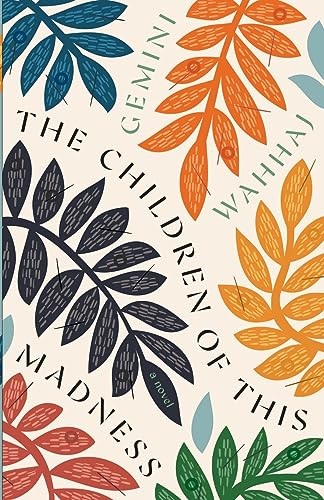 Book you're an evangelist for:
Book you're an evangelist for:
Mavis Gallant's Varieties of Exile, about English-speaking Canadians in Montreal, which I will casually mention to people when they are discussing what to read next. The language is precise and clear, describing ordinary people of another time, often poor, struggling, or befuddled by the tragedies of their lives.
Book you've bought for the cover:
Jennifer Maritza McCauley's When Trying to Return Home has an absolutely stunning cover. I was at a reading for another author where McCauley was also reading. I bought it on impulse, because of the deep colors that are both beautiful and painful, red and orange faces floating in a sea of purplish blue. The stories about Black American and Afro Puerto Rican characters trying to survive and keep their humanity in America are just stunning. Every time I reread a story, I sit with it for hours.
Book you hid from your parents:
All through high school, I hid story books inside my physics textbook. I won't mention the Mills & Boon romances, but I remember hiding Lynne Reid Banks's My Darling Villain, about an upper-middle class English teenager's first love, with a working-class boy. When my father discovered it in my physics textbook, I made him read it too. But my parents didn't really care what I read. They never censored me. I should probably mention all the Jackie Collins novels I read, which were actually very good and informative.
Book that changed your life:
Fiction. Aldous Huxley's Brave New World¸ but only when I reread it as an adult. People simply parrot what they are fed through media. It's supposed to be dystopian, but it mirrors reality pretty closely.
Favorite line from a book:
From the title story of Chaitali Sen's collection A New Race of Men from Heaven, narrated by a young woman whose Indian father gave up his homeland for his English wife, "When I showed them pictures of their grandfather, we could see what was always there, the greatness of the effort, the constant clenching of his heart."
Five books you'll never part with:
The Little Bookroom by Eleanor Farjeon, a book of fairy tales that root for the underdog; Orientalism by Edward Said, about the othering of the global south in Western narratives; The Gathering by Anne Enright, about an Irish family's loss and grief; Edward P. Jones's Lost in the City, especially "A New Man," a story about why we tell stories; and Louise Erdrich's story collection Love Medicine, about the dispossessed but still enduring indigenous people, told with such grace.
Book you most want to read again for the first time:
I often reread Never Let Me Go by Kazuo Ishiguro, about human clones created solely to be organ donors. It feels like I'm reading for the first time. The language is so romantic and painful. I am transported to another world again.
Book you would recommend from another language:
Sunil Gangopadhyay wrote many phenomenal novels in Bengali, ranging from contemporary stories offering social critique to historical fiction. I recommend his historical novel Shei Shomoi (Those Days), about India under British occupation, also a story of Indian renaissance, which is now available in translation.
Book Candy
Book Candy
Open Culture suggested you "read Margaret Cavendish's The Blazing World: the first sci-fi novel written by a woman (1666)."
---
To celebrate his January 25 birthday, Mental Floss found "8 things named after Scottish poet Robert Burns."
---
Barleyhood, for example. Merriam-Webster looked up "9 more top-shelf drinking words."
Rediscover
Rediscover: David J. Skal
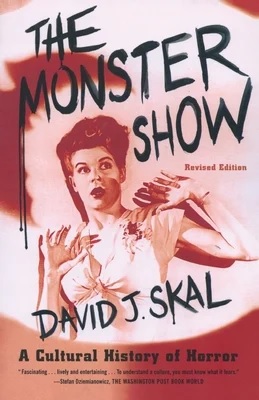 David J. Skal, author, historian, critic, and an authority on Bram Stoker, Dracula, and monsters in popular culture, died on January 1 of a heart attack after a car accident caused by a drunk driver. He was 71.
David J. Skal, author, historian, critic, and an authority on Bram Stoker, Dracula, and monsters in popular culture, died on January 1 of a heart attack after a car accident caused by a drunk driver. He was 71.
Skal was best known for his horror movie and biography titles. They include Something in the Blood: The Untold Story of Bram Stoker, the Man Who Wrote Dracula (2016), which was recently optioned for film adaptation, Hollywood Gothic: The Tangled Web of Dracula from Novel to Stage to Screen (1990), The Monster Show: A Cultural History of Horror (1993), and Dark Carnival: The Secret World of Tod Browning, co-written with Elias Savada (1995), which is being reissued by the University of Minnesota Press this fall. Other titles include V Is for Vampire: The A to Z Guide to Everything Undead (1996), Screams of Reason: Mad Science and Modern Culture (1998), Death Makes a Holiday: A Cultural History of Halloween (2002), and Claude Rains: An Actor's Voice (2008). Skal also co-edited the 1997 Norton Critical Edition of Bram Stoker's Dracula and compiled the 2001 anthology Vampires: Encounters with the Undead.
Skal also wrote three science fiction novels: Scavengers (1980), When We Were Good (1981), and Antibodies (1988). He regularly contributed film reviews to the Magazine of Fantasy and Science Fiction and appeared in several TV specials and documentaries.
His longtime literary agent, Malaga Baldi, called Skal "a movie aficionado, horror fan and a monster man extraordinaire. His impressions of Dracula kept adults and children in horrified giggles for hours." Baldi added, "Skal will always be my main monster man: I was never one for scary things--but anything and everything frightening brought to the table by David was presented with panache, delightful writing, an exquisite eye for images and a great sense of humor."


